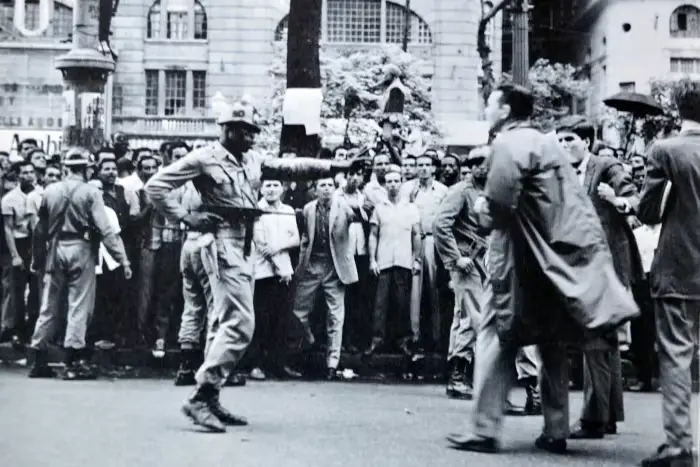As Latin America’s largest and most influential country, Brazil shapes regional trends more significantly than often perceived on the global stage.
In March 2024, we mark 60 years since Brazil initiated a wave of military dictatorships that swept through South America until 1990.
The 1964 Brazilian coup, with U.S. support, sparked authoritarian rule across the continent. Only in 1985, after 21 years, did Brazil return to democracy.
The U.S. played a significant role in this era, aiming to thwart communist influences during the Cold War.
Its involvement was partly motivated by events like the Cuban Revolution, which had shifted Cuba closer to the Soviet Union, leading to tensions exemplified by the Cuban Missile Crisis.

Following Brazil’s example, nations including Bolivia, Peru, Uruguay, Chile, and Argentina fell into dictatorship.
These regimes, often brutal, engaged in state terrorism, resulting in over 85,000 deaths and disappearances.
Each country’s truth commissions meticulously documented the regime’s actions.
Operation Condor, a notorious campaign in the 1970s and 1980s, saw these countries, with U.S. backing, target dissidents and subversives.
This operation involved covert actions to surveil, abduct, torture, and eliminate political opponents, even those in exile.
Before this, in 1968, Brazil’s AI-5 decree allowed the government to dissolve legislative bodies and suspend political rights, making it a hallmark of state repression.
This period saw the abolition of habeas corpus for political crimes, tightening the regime’s grip on power.
A Look Back: 60 Years Since Brazil Sparked South America’s Era of Dictatorships
By the 1980s, Brazil’s dictatorship began to crumble amidst economic turmoil and a clamor for direct presidential elections, symbolized by the Diretas Já movement.
The regime ended in 1985 with Tancredo Neves’ election, although he never took office; his vice, José Sarney, succeeded him instead.
Brazil’s long dictatorship, one of the longest in South America, concluded while Chile was still under Augusto Pinochet’s rule, ending in 1990.
This chapter in history underscores the profound impacts of political upheaval and the enduring fight for democracy in the region.

